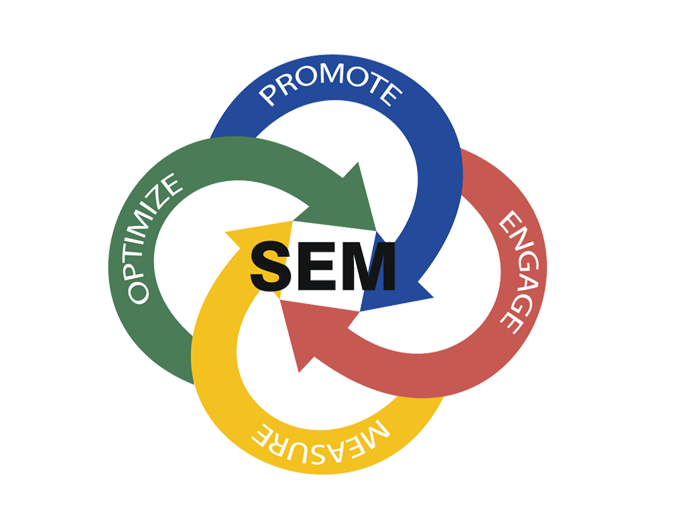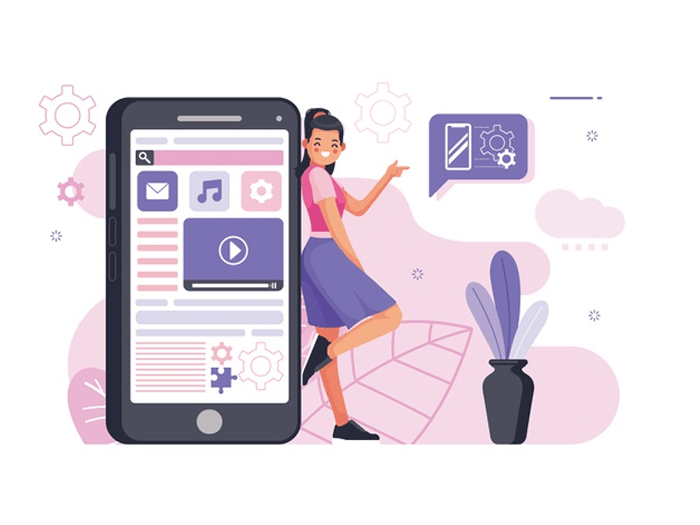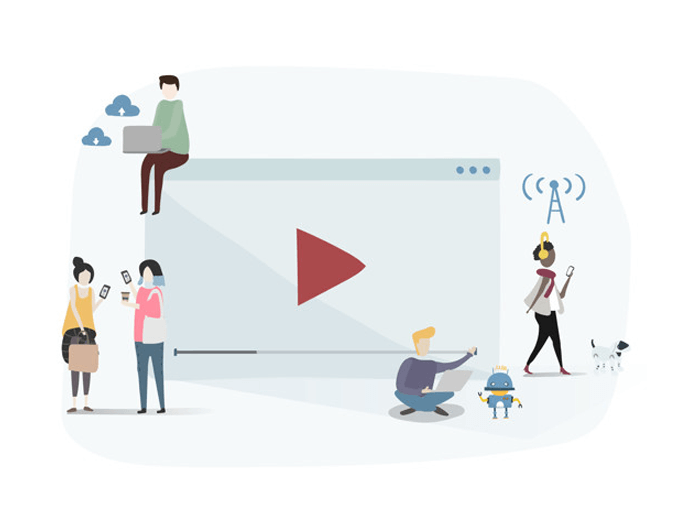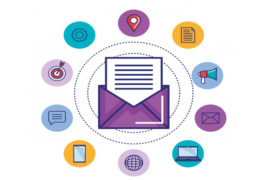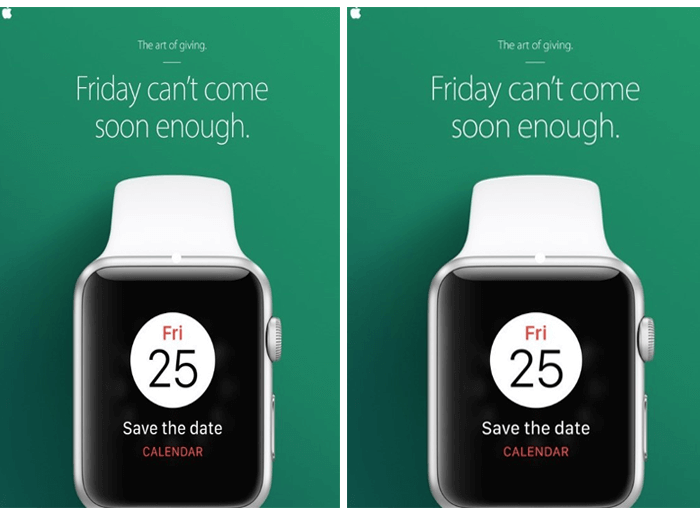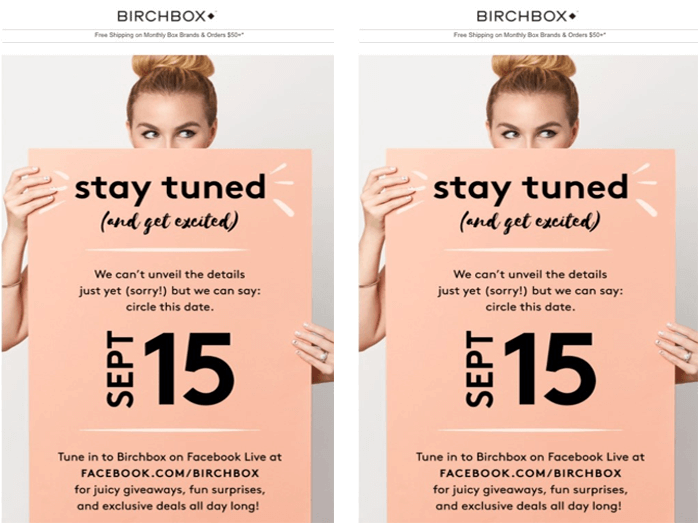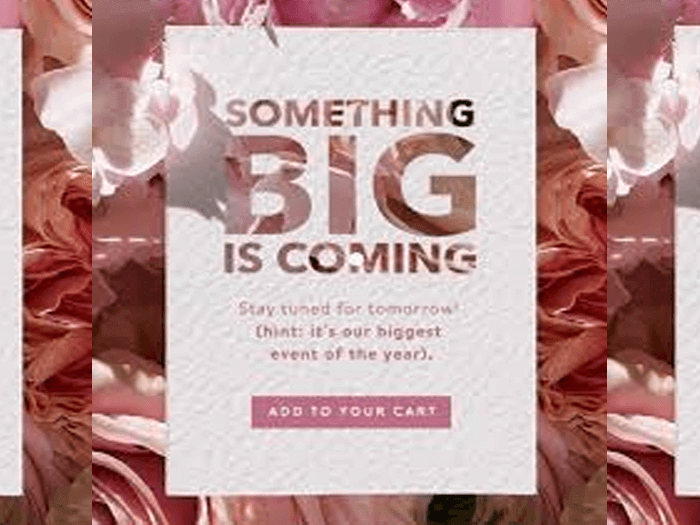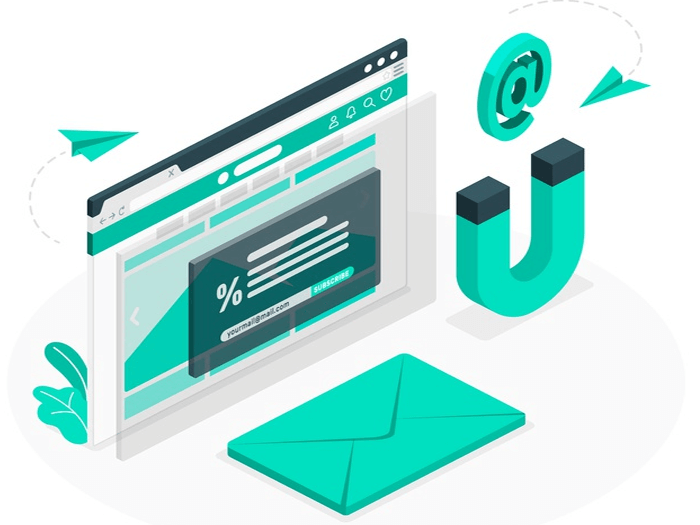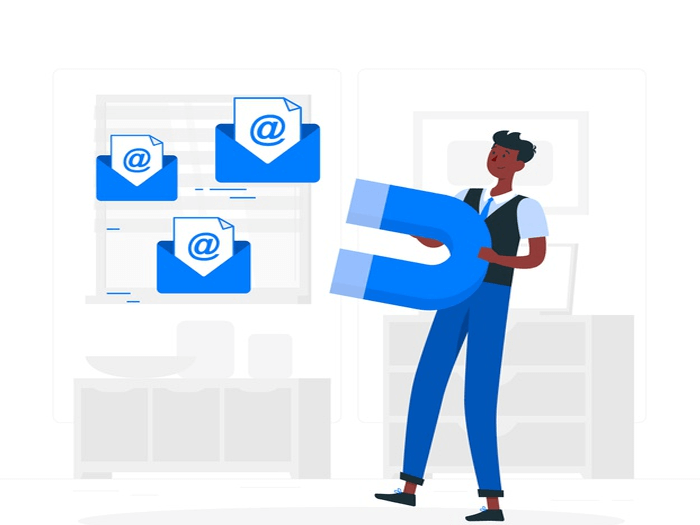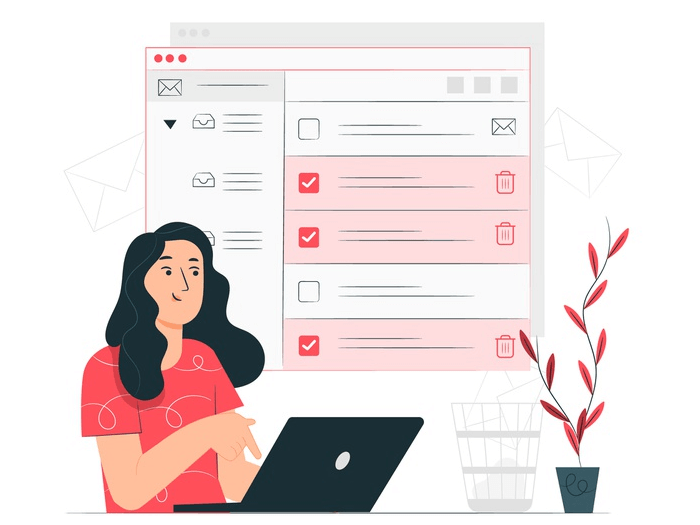One major challenge of writers is providing content that will engage their audience. The type that will make readers anticipates more.
As a writer, you should bear in mind that your reader has a problem or a need to be solved or satisfied. Helping them find solutions and ideas for their pain points is an easy way of providing addictive content. Indeed you want your blog to be a “Go-To”. Then stay put as you will discover the:
10 Addictive Content-Type
#1. Reviews[ps2id id=’Reviews’ target=”/]

Writing a review article is one way to help people have a better understanding of a particular topic without going through the stress of reading the entire detail of the topic.
It is more than just citing an interesting topic and gathering the relevant references to the topic.
But gives an opportunity as a writer to contribute to the development of expertise findings. A well-writing review article can end up becoming the definitive “go-to” guide for your audience.
Reviews of products, books or applications in a particular niche help them save time as they serve as shortcut solutions to their quest.
The best way to present your thoughts depends on what you’re writing about and who you are writing it for. However, finding the right content may seem difficult.
Here is a simple structure that you can stick around with to helping you start writing good reviews that resonate in real ways with your audience:
– Thesis
Knowing your message before you start putting up a review article is very important. A simple thesis can help you out, keeping you from going off-topic. This could be as straightforward as “I liked this dress!” or as direct as “These clothes took a while to wear it.”
– PROS and CONS
PROS and CONS in a review article create a balance. But in the most glowing review, you may not include the CONS. On the other hand for a critical review, try to include at least one PROS, just to provide a break in between.
– Recommendation
Most readers check out for recommendations, and this is the first thing they tend to look for. It doesn’t have to be lengthy.
You may make it short, like “I tripled my Christmas money bag many times before they knew it,” or “I’d recommend these tools, but only if you’re a Tech-savvy as I am.” If you need more directions, Grammarly is a great place to help you:
- For a book review: Grammarly has tips and tricks on how to keep your review informative, enlightening, and kind.
- For a movie review: Grammarly can help keep you from getting too stressed about how to rate the film you just watched:
- For a review of your new favorite restaurant: You may need to paint a bigger picture of your experience in your favorite restaurant. Grammarly can help with that.
#2. Lists[ps2id id=’Lists’ target=”/]
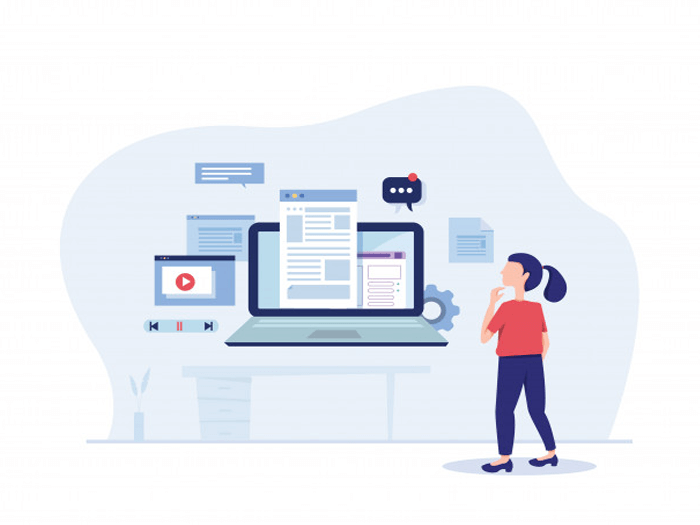
Creating and sharing the list of content has remained viable and efficient in content marketing, making your content achieve a more optimal influence.
Although the list content-type is not a new technique. Writers have figured out that content arranged in list form is quicker to find, easier to remember, and more actionable, which makes lists a great deal for sharing content as part of a highly effective content plan.
It’s a good practice to include a long list of tips, tactics, and answers that provide readers with a resource that maps out many ideas that they can go back to as a reference.
Here are a few steps to helping you make a well-ordered content list that will connect with your readers in real ways:
– Create a Branded Community
Having a community of like-minded individuals, enthusiasts, or professionals can extend the reach of your content. This is where a well-ordered content list works better.
Example: In late January 2013, twenty Microsoft SharePoint consultants decided to embed a list of resources on their blogs.
Each member received a SharePoint Community Partner badge to display on his/her blog’s front page, which links to a Community page that contains the complete embedded list of members.
The SharePoint community awards the partner who earns the most views from his or her embedded content by featuring him or her at the top of the following week’s list. To add to this – the SharePoint Community has synchronized its own Twitter list of members with a Listly-based Twitter list, so the whole community can recommend people to follow on Twitter, and both lists will be updated with the relevant information. This helps community members find more people with which to share relevant content.
– Create A Contest
Designing contests around lists is a great way to attract a qualified audience to your content. Contests are all about creating awareness and exposure for a business or company brand.
Example: Here’s what leading gamification expert Gabe Zicherman does with lists for GSummit gamification events: GSummit runs multiple contests and acknowledges the best in the workplace — they focus each contest on a specific content niche (or domain), such as Human Resources, Start-ups, Enterprises, Education, Hospitality, and Health & Wellness. Each time it runs an event, GSummit creates a unique list of content on Listly for each domain and seeds that list among a few possible candidates. The candidates then embed these lists on their blogs, along with the rules and expectations of the contest and the contestant’s branding, and invite others in their networks to engage.
The GSummit model is easy for anyone engaged in a contest to replicate, providing a way to share content, showcase themselves (or their company), and attract votes. It’s an efficient and engaging way of putting crowd-sourced content in front of your audience and distributing it across multiple online locations both before and during an event.
– Create Buzz Around A Conference

The ability for audiences to engage with conference speakers through lists is a great way to build buzz for your organization’s upcoming events.
Consider creating a list of your attendees ahead of your event, which allows people to prioritize how they should network, as well as how and what content they will likely want to share before, during, and after the event.
Distributing dynamic lists of conference speakers can extend the reach of the speakers’ insight, as well as serving as a way to curate their content for viewing after the conference, or to allow people who were unable to attend the conference to benefit from the subject matter.
Example: Consider the case of Tomorrow’s IT Service Future Today’s 2012 conference (TFT12), the first 24-hour global ITSM virtual conference.
Speakers were asked to make their submission following precise instructions to include presentation title, synopsis, biography, and preferred time zone (EMEA, Australasia, US).
The top 24 speakers for the event were chosen for their popularity, as voted on by the community on the Listly list.
This list participation created enormous pre-conference buzz and engagement as a result of the speakers adding themselves to the list, promoting themselves and the conference, and adding to this the voting by others.
#3. How To’s[ps2id id=’How-To’s’ target=”/]

If you’ve ever shared a recipe or do-it-yourself guide, then, you already understand the basic structure of writing a”how-to” article. How-to is written as a sequence to inform a reader necessary steps to follow.
One common question every writer asks when writing a how-to is, ‘what happens next?” When you want to write a how-to article, start at what is considered the beginning, and just keep answering that question over and over again.
Before you know it, you completed the draft of a how-to article. Here are a few steps to help you come up with a good how-to content
– Pick An Interesting Topic
Pick a topic that will catch your reader’s interest. Compelling enough to make them never want to take their eyes off your page till they exhaust the content. Narrow it if it is broad and be specific with your subject.
– Address Your Audience Pain Point
Now you’ve been able to pick a perfect topic that will resonate well with your reader. But the question is: does it address their pain points? Better still! What ways will your content fit into your audience’s needs and concerns? Let’s switch gears for a moment – Imagine you’re the writer of this article.
As the writer, what questions would you like answered? You might not know the answers yet but list the questions anyway.
– Research On The Topic
The research will ground your article, providing you with more details to include in your how-to article. Ensure to put together all information need in a draft. These may include:
- Statistics
- Quotes by well-known people
- Definitions
- Anecdotes (short, illustrative stories about yourself or someone else)
- Quotes and examples from people like the reader, or popular books on the subject
- References to other media (film, television, radio)
- References to local venues or events (if for a regional/local publication)
- Helpful tools, resources or products (if many, consider creating a sidebar)
– Get Your Draft Ready
Its time to get your draft ready. While you do that; ask yourself: Is it working? Is it too general, too lightweight, uninteresting, unclear or choppy? If so, comb break it down.
Then, write a better one incorporating the new supporting information you’ve collected. See techniques the Elite writers are using that you might employ. [ internal link]
– Clearly Define Your Points
Double-check to see that you’ve included every pertinent step in the process. How-to articles have to be thorough.
You want your reader to walk away knowing exactly how to do exactly what is stated. If your narrative goes on and on, or off in too many directions, break it down into key points indicated with subheads (as in this article).
Synthesizing complicated information and breaking it down into steps is especially crucial for online writing, and is also a trend in print.
– Always Remember The 3Rs: READ, REVISE, REPEAT
Read the draft of your how-to article out loud to a supportive friend.
Then, ask a series of questions: Do they understand the process? Are there any steps missing? Is there more to know about the subject? Could they do the task themself? Revise the draft, With your friend’s suggestions in mind, use your best judgment in doing that. Rewrite, find a proofreader and, only when you’re satisfied you’ve written an effective how-to article, submit your piece to an appropriate publication with a short cover letter.
#4. Experts And Thought Leader Interviews[ps2id id=’Experts-And-Thought-Leader-Interviews’ target=”/]

One term that raises the eyeballs of a writer is thought leadership. But what is thought leadership? I define thought leadership as a type of content marketing where you tap into the talent, experience, and passion inside your business, or from your community, to consistently answer the biggest questions on the minds of your target audience on a particular topic. In simpler words:
Thought Leadership means you provide the best and deepest answers, to your customer’s biggest questions, in the formats your audience likes to consume. Here are a few steps to help you start on a good page
– Know Your Audience
This is true of any marketing activity. You’ve got to know your audience before you begin strategizing, writing or designing. If it’s not written for the right people, they obviously won’t read it.
When it comes to thought leadership, you should know a little bit about your audience before you talk to a small to mid-size enterprise (SME). It’ll help you shape your questions and frame the content better.
– Get a Primer
It’s important to get a primer. This will help you have a productive conversation. Sometimes we generate ideas on our own and pitch them to our clients; other times, our clients toss an idea to us and suggest someone who could serve as an SME.
The best way to understand the specific angle of a selected topic.
– Do Your Research
It’s hugely important to research before talking to an expert. While you may not be able to do a whole lot of research around the exact topic itself, it pays to have a general understanding of the main principles of your topic. That means you should:
- Research your topic online and find authoritative sources. Obvious, content from competitors can provide context, but try to find other useful resources to learn about your topic.
- Identify industry publications. Find spots where other similar thought leaders sound off and where your audience hangs out. You’ll get an idea of where your audience stands on the topic and any recent developments.
- Explore social media. For a B2B audience, check out LinkedIn groups that might be applicable. You may also find a fair amount of chatter on Twitter and Facebook, depending on the topic.
– Develop Lots of Questions
You may place yourself in an awful position, if you don’t have enough background information and your goal is to get information out of your SME to write a thoughtful and intelligent piece of content.
You need to develop lots of questions before the interview. Better still! Get into the habit of sending SMEs the questions before your interview. It’ll help them prepare (if they have time) and help you avoid procrastinating.
– Be Specific
I can’t stress enough how important it is to be specific during the interview—and how difficult it is to be specific if you don’t understand a topic.
Asking specific questions and follow-ups are the best way to figure out the nuance of a content piece and make it as interesting as possible for your audience.
However, this is often easier said than done. It may mean driving your SME to avoid industry jargon and generalities and provide specific examples about a topic.
If I’m talking to an SME about insurance funding strategies, for example, I always ask for a real-life client example.
This helps me confirm that I understand what the SME is saying, and it’s also often useful to include in a piece of content.
– Think on Your Feet
Interviews are tough—you’ve got to phrase questions the right way, take notes and listen at the same time. You’ve also got to make sure you’re getting what you need out of your SME—which may require rephrasing a question or asking it in a different way to tease out the information.
We call this “thinking on your feet”—it’s a matter of digging deeper into a topic or offering a creative suggestion quickly, and the best way to get better at is with lots of practice.
– Ask
Even after spending time researching and planning for an SME interview, you might not uncover everything. Ask your SME if there’s anything else they’d like to add to the conversation.
Often it’s this question that helps to add context to the conversation or provides an opportunity to discuss other relevant information that can help shape the message.
We’ve even found these open-ended questions lead to other topics that could be covered in the future. Examples From Zero To 40,000 Facebook Fans: Interview With Mike Watkins
#5. Case Studies[ps2id id=’Case-Studies’ target=”/]

Earning the trust of prospective customers can be a struggle. You will need to demonstrate your ability to deliver on what your product or service promises.
Writing a case study is a great way to do that. Sure, you could say that you’re great at providing “Y service”, or that you’re way ahead of the competition when it comes to “Z services”.
But the bottom line is that your prospective customers need a certain level of trust to influence their purchasing decisions. One of the best ways to prove your worth is through a compelling case study. Here are a few steps to help you out:
– Determine The Case Study’s Objective
All business case studies are designed to demonstrate the value of your services to meet client’s objectives or goals.
Your first step when writing a case study is to determine the objective or goal of the subject you’re featuring. In other words, what will the client have succeeded in doing by the end of the piece?
The client objective you focus on will depend on what you want to prove to your future customers as a result of publishing this case study. Your case study can focus on one of the following client objectives:
- Complying with government regulation
- Lowering business costs
- Becoming profitable
- Generating more leads
- Closing on more customers
- Generating more revenue
- Expanding into a new market
- Becoming more sustainable or energy-efficient
– Establish a Case Study Medium

Next, you’ll determine the medium in which you’ll create the case study. In other words, how will you tell this story? Case studies don’t have to be a simple, written one-page piece.
Using different media in your case study can allow you to promote your final piece on different channels. For example, while a written case study might just live on your website and get featured in a Facebook post, you can post an infographic case study on Pinterest, and a video case study on your YouTube channel. Here are some different case study mediums to consider:
- Written Case Study: Consider writing this case study in the form of an ebook and converting it to a downloadable PDF. Then, gate the PDF behind a landing page and form for readers to fill out before downloading the piece, allowing this case study to generate leads for your business.
- Video Case Study: Plan on meeting with the client and shooting an interview. Seeing the subject, in person, talk about the service you provided them can go a long way in the eyes of your potential customers.
- Infographic Case Study: Use the long, vertical format of an infographic to tell your success story from top to bottom. As you progress down the infographic, emphasize major KPIs using bigger text and charts that show the successes your client has had since working with you.
- Podcast Case Study: Podcasts are a platform for you to have a candid conversation with your client. This type of case study can sound more real and human to your audience — they’ll know the partnership between you and your client was a genuine success.
– Find the right case study candidate
Writing about a given project requires more than picking a client and telling a story. You need permission, quotes, and a plan. Better still! finding the right case study candidates.
To start, here are a few things to look for in potential candidates.
- Product Knowledge: It helps to select a customer who’s well-versed in the logistics of your product or service. That way, he or she can better speak to the value of what you offer in a way that makes sense for future customers.
- Remarkable Results: Clients that have seen the best results are going to make the strongest case studies. If their businesses have seen an exemplary ROI from your product or service, they’re more likely to convey the enthusiasm that you want prospects to feel, too. One part of this step is to choose clients who have experienced unexpected success from your product or service. When you’ve provided non-traditional customers — in industries that you don’t usually work with, for example — with positive results, it can help to remove doubts from prospects.
- Recognizable Names: While small companies can have powerful stories, bigger or more notable brands tend to lend credibility to your own — in some cases, having brand recognition can lead to 24.4X as much growth as companies without it.
- Switchers: Customers that came to you after working with a competitor help highlight your competitive advantage, and might even sway decisions in your favor
– Contact your candidate for permission to write about them
To get the case study candidate involved, you have to set the stage for clear and open communication. That means outlining expectations and a timeline right away — not having those is one of the biggest culprits in delayed case study creation.
Most importantly at this point, however, is getting your subject’s approval. When first reaching out to your case study candidate, provide them with the case study’s objective and format — both of which you will have come up within the first two steps above.
To get this initial permission from your subject, put yourself in their shoes — what would they want out of this case study? Although you’re writing this for your own company’s benefit, your subject is far more interested in the benefit it has for them.
Here are four potential benefits you can promise your case study candidate to gain their approval:
- Brand Exposure: Explain to your subject whom this case study will be exposed to, and how this exposure can help increase their brand awareness both in and beyond their industry. In the B2B sector, brand awareness can be hard to collect outside one’s market, making case studies particularly useful to a client looking to expand their name’s reach.
- Employee Exposure: Allow your subject to provide quotes with credits back to specific employees. When this is an option to them, their brand isn’t the only thing expanding its reach — their employees can get their name out there, too. This presents your subject with networking and career development opportunities they might not have otherwise.
- Product Discount: This is a more tangible incentive you can offer your case study candidate, especially if they’re a current customer of yours. If they agree to be your subject, offer them a product discount — or free trial of another product — as a thank-you for their help creating your case study.
- Backlinks and Website Traffic: Here’s a benefit that is sure to resonate with your subject’s marketing team: If you publish your case study to your website, and your study links back to your subject’s website — known as a “backlink” — this small gesture can give them website traffic from visitors who click through to your subject’s website. Additionally, a backlink from you increases your subject’s page authority in the eyes of Google. This helps them rank more highly in search engine results and collect traffic from readers who are already looking for information about their industry.
– Draft and send your subject a case study release form
Once your case study candidate approves of your case study, it’s time to send them a release form. A case study release form tells you what you’ll need from your chosen subject, like permission to use any brand names and share the project information publicly. Kick-off this process with an email that runs through exactly what they can expect from you, as well as what you need from them.
To give you an idea of what that might look like, check out this sample email: You might be wondering, “What’s a Case Study Release Form?” or, “What’s a Success Story Letter?” Let’s break those down. – Ensure you’re asking the right questions.
Before you execute the questionnaire and actual interview, make sure you’re setting yourself up for success. A strong case study results from being prepared to ask the right questions. What do those look like? Here are a few examples to get you started:
- What are your goals?
- What challenges were you experiencing before purchasing our product or service?
- What made our product or service stand out against our competitors?
- What did your decision-making process look like?
- How have you benefited from using our product or service? (Where applicable, always ask for data.)
Examples:
1. “New England Journal of Medicine,” by Corey McPherson Nash
When branding and design studio Corey McPherson Nash showcases its work, it makes sense for it to be visual — after all, that’s what they do. So in building the case study for the studio’s work on the New England Journal of Medicine’s integrated advertising campaign — a project that included the goal of promoting the client’s digital presence — Corey McPherson Nash showed its audience what it did, rather than purely telling it. Notice that the case study does include some light written copy — which includes the major points we’ve suggested — but lets the visuals do the talking, allowing users to absorb the studio’s services.
2. “Shopify Uses HubSpot CRM to Transform High Volume Sales Organization,” by HubSpot
What’s interesting about this case study is the way it leads with the customer. This reflects a major HubSpot credo, which is to always solve for the customer first.
The copy leads with a brief description of why Shopify uses HubSpot and is accompanied by a short video and some basic statistics on the company.
Notice that this case study uses mixed-media. Yes, there is a short video, but it’s elaborated upon in the additional text on the page. So, while case studies can use one or the other, don’t be afraid to combine written copy with visuals to emphasize the project’s success.
3. “Designing the Future of Urban Farming,” by IDEO
Here’s a design company that knows how to lead with simplicity in its case studies. As soon as the visitor arrives at the page, he or she is greeted with a big, bold photo, and two very simple columns of text — “The Challenge” and “
The Outcome.” Immediately, IDEO has communicated two of the case study’s major pillars. And while that’s great — the company created a solution for vertical farming startup INFARM’s challenge — it doesn’t stop there.
As the user scrolls down, those pillars are elaborated upon with a comprehensive (but not overwhelming) copy that outlines what that process looked like, replete with quotes and additional visuals.
4. “Secure Wi-Fi Wins Big for Tournament,” by WatchGuard
Then, there are the cases when visuals can tell almost the entire story — when executed correctly. Network security provider WatchGuard can do that through this video, which tells the story of how its services enhanced the attendee and vendor experience at the Windmill Ultimate Frisbee tournament.
#6. Negative or Contrarian Stories[ps2id id=’Negative-or-Contrarian-Stories’ target=”/]

It never ceases to surprise me that a negative headline and position will drive more traffic than a positive slant on a story or article. When you say something counter to received wisdom, people pay attention.
This works in every vertical, no matter how boring. Check this out:
Hey, let’s be honest – PPC is pretty boring in the grand scheme!) Marketers often wonder, how can I create engaging content when I work in this boring industry? The truth is, the people who work in your industry don’t find it boring. You’re trying to hit a nerve with them, not the general population. As long as your content speaks to what matters to them, it won’t be boring.
Accordingly, contrarian content earns attention and boosts all your engagement metrics, getting more:
- Traffic – Unexpected ideas are click magnets. This includes high return traffic – people come back to read the comments!
- Social shares – When something is making the rounds, a lot of people share even if they don’t read the post. That’s still good for you: the more people who see the link, the more people are exposed to your brand.
- Email shares – “OMG, check this out!”
- Comments – Controversial topics always have higher comment counts, plus the comments are much more compelling than a string of people saying “Nice post.”
- Links – Expect round-up links as well as response articles – people may refute or build on your argument.
Controversial ideas have a huge ripple effect because people take an interest – clicking, reading, commenting, and often sharing – whether or not they agree
That’s because it tends to hit people’s emotional triggers, like surprise and anger. Since contrarian opinions tend to get your content in front of new audiences that weren’t familiar with you before, it’s often a way to expand your reach, get new email subscribers and blog readers, even trigger a chain of more first actions and conversions on your website.
The best way to stand out in a crowded, redundant space is to say something different. But how do you come up with those ideas? Here are two ways on how to come up with differentiating Ideas:
– News Scanning Tools
These tools will help you to stay on top of trending stories:
- Twitter – Follow influencers in your space and spend a little time every day doing a news scan there. It’ll be obvious when everyone is talking about the same thing – no hashtags required.
- News aggregators – In our industry, Inbound.org is a good indicator of what stories are earning attention from your peers. See also Reddit, Y Combinator, etc.
- Email subscriptions – Again, using search marketing as an example, you can subscribe to newsletters like the Search Cap and the Moz Top 10 to see what stories and topics are having an impact.
- Google Alerts – Subscribe to get alerts when topics you cover are getting a notice in the news.
- Google Trends – This tool also could surface interesting trends to write about, depending on how niche your industry is.
– Appoint a News Scan Point Person
Another tactic you can deploy internally is naming a point person to do a near-daily news scan.
This way, everyone in your marketing department or company doesn’t need to devote time and resources to looking for stories to pounce on.
Someone on the content team can be responsible for scanning the news and sending out a digest-style email to stakeholders with interesting stories.
#7. Facts, Figures, and Statistics[ps2id id=’Facts,-Figures,-and-Statistics’ target=”/]

Has this ever happened to you? You’ve discovered a fascinating statistic that clinches your persuasive argument. You save it for your last point and deliver it.
You expect a wave of emotion to hit your audience, but… Nothing. Your audience doesn’t react at all.
Do they not get it? If this sounds familiar, then you are not alone. A Six Minutes subscriber, Akiko Takeshita, sends this question via email:
I wonder if you have any advice for working statistics into a speech. Sometimes it works for me, but I often feel like the audience isn’t impacted by the statistic when the statistic seems very powerful to me. What am I doing wrong?
In this article, we examine the importance of using statistics in your speech, and how to do so effectively. Knowing how to leverage statistics in your speech is an important skill.
- Statistics add realism to your speech. It’s okay to talk about big ideas in abstract terms, but you also have to make it real. Numbers and facts are one way to staple your speech arguments to reality (thus boosting logos). For example, claiming that correctly setting your tire pressure will increase your fuel mileage is one thing. But stating that it could save $500 a year in fuel costs is much better.
- Statistics can have an emotional impact (pathos) on your audience. For example, you can amplify the emotional response in your speech about poverty by revealing the percentage of children in your community who will not be receiving gifts this holiday season.
- Statistics raise your credibility (ethos) in two ways. First, using a statistic demonstrates that you’ve done the research and are working hard for the audience. Second, using statistics from trusted sources (e.g. the World Health Organization) boosts your credibility by association.
- Statistics can be memorable, sticking with your audience beyond the duration of your speech.
Here are a few ways on how to choose the right statistics:
– Numbers and Facts

“Numbers and facts are one way to staple your speech arguments to reality.”
If you plunge yourself into research for your topic, you’ll find that you are soon swimming in statistics. With so much data to choose from, how do you decide which material to use? Consider the following factors when making your choice:
- Which statistics would impact your audience most? While it helps if you feel the statistic is powerful (so you can speak with sincerity), it’s more important to choose statistics that your audience will find powerful.
- Which statistics are most surprising? This, too, is dependent on the audience. Your goal is to have your audience members leave the room and say to their friends, “You’ll never believe what I learned in a speech today…“
- Which statistics help validate your arguments? Statistics should not be included in your speech because they are merely interesting trivia; they must be closely tied to your core message or supporting points. If it isn’t relevant to your speech, your audience may remember the statistic, but they won’t remember you or your message.
– weaving the statistic into your speech
If you remember just one thing from this article, remember this: you must provide a meaningful context for your statistics. A naked statistic will not impact your audience if they do not have the background knowledge to assess it properly.
For example, suppose I tell you that Six Minutes has ten thousand subscribers. You may be impressed, but you may not. Is that a big number? A small number? However, if I also tell you that this makes Six Minutes one of the most popular speaking blogs on the planet (or perhaps the most popular), this allows you to interpret the statistic in a more meaningful context.
- Follow up the statistic with a comparison in concrete terms to which your audience can relate.
- Bring your statistic to life by telling the story of one of the “numbers”. For example, if your statistic is the number of people with breast cancer, you might begin by telling the story of a breast cancer victim and then reveal that “she is just one of 100,000 women in this country who will find out they have cancer this year.”
- Compare the statistic to itself earlier. The most powerful aspect may be to see how the value has changed from one year to the next, or from one decade to the next.
- Don’t rely on your audience to just “get it.” Explain the connection between the statistic and your message. A direct approach is usually best, such as “This is important because…“
– Delivering the statistic for maximum effect
Assuming you’ve used one of the earlier tips for weaving the statistic into your speech, your effectiveness still hinges on successful delivery. Here are a few techniques you can use to maximize the effect you desire:
- Hint at its importance. You can do this earlier in the speech to build suspense (e.g. “In a few moments, I’m going to reveal a shocking statistic that will make you change the way you view civic politics…“) or use a quick, immediate approach (e.g. “If you remember just one thing from this speech, remember this…“)
- Pause immediately before the statistic to create suspense.
- Articulate clearly, and speak slightly slower than your normal rate. This will also signal the importance of the statistic.
- Pause immediately after the statistic (a little longer than before) to give your audience time to process the meaning and “feel” the impact.
- Use gestures to demonstrate the magnitude. Standing with your arms wide open, for example, creates a sense of size.
- Use facial expressions to convey the appropriate reaction. (i.e. show your shock, surprise, sadness, etc.)
- If you are speaking with slides, you might reveal a slide to coincide with your statistic. You could use a chart to highlight the magnitude of the number, or you could use a photograph to strike a more emotional tone. Whatever you do, make sure that the slide is simple! You want your audience to easily digest the meaning along with your spoken words.
People love facts and figures and aggregating the latest data about your industry will provide a focus on your blog that will keep your readers coming back for more.
Providing this regularly will assist you in positioning your blog and content as the hub to keep on top of the latest numbers.
Statistics help businesses pick trends and opportunities in their sector. Example 50 Fascinating Facebook Facts And Figures This is, in fact, a hybrid content type that mixes the mega list format with the facts and figures
#8. News Stories[ps2id id=’News-Stories’ target=”/]

It is a known fact that News stories has always been an attractive and valuable content type. Businesses don’t hesitate to put a slant on the news that displays the grasp of their industry.
However, writing well-structured news stories articles that inform, educate, and entertain is not as easy as it looks. There is, of course, a definite knack to writing well, especially about a newsy topic. Journalists are trained to write content that will hook readers from the first sentence and make them want to read on.
These journalistic principles can be adopted by content marketers to help engage their audiences. Here are ten rules for writing a captivating story on a hot topic, whether in print or online:
- Begin with the most important facts first. The intro to every article needs to grab the reader’s attention instantly and summarize the story with around 25 to 30 words.
- Make your text thorough but succinct. The first few sentences need to include “who, what, where, when, why, and how.” Remember most people will not read more than 250 words before they start to skim. You should try to give them all the information they need as quickly as possible.
- Use the active tense. It is faster and uses fewer words. For example, “Argentina was beaten by Germany in last night’s World Cup final …” takes longer to read than “Germany beat Argentina …”
- Communicate what’s new or different. Why would the reader care about what you have to say? Why is it relevant to them? Is there a trend happening in pop culture or the world that you can incorporate? What are people talking about right now, and how does this tie in with what you do?
- Focus on human interest. While people may be interested in the latest political polls, a new cancer treatment, a food or product recall, or what the weather will be like tomorrow, if you can put a human face to the story, you will create an emotional connection that will draw readers in and keep them engaged.
- Avoid jargon. Every industry has its language, including journalism. For example, do you know what a byline is? (The name of the author included in a box at the beginning or end of a story.) How about a NIB? (News in brief: short snippets of news, which run down the outer edge of a newspaper page.) Or a splash? (The lead story.) Think about the language you use — keep it clear, concise, and to the point.
- Write acronyms out in full in the first reference. Consider the following acronyms: ROI, ASBO, PCT, SATs, and FTSE. What do they stand for? Answers, respectively: Return on investment, Anti-social behavior order, Primary care trust, Standard Assessment Tests, and Financial Times Stock Exchange.
- Use quotes. It’s powerful to convey important thoughts with someone else’s words. However, when you quote others, make sure to get it right. Double-check the spelling of your interviewee’s name and make sure you don’t take quotes out of context in a way that distorts the person’s intentions.
- Keep it real. Although journalists often joke about never letting the truth get in the way of a good story, you should never, ever write something you know is untrue. We all make mistakes, but a mistake is very different from a lie.
- Have someone else proofread your work. Very few people can spot their own mistakes, so it’s wise to have a colleague double-check your work before you publish. Remember that the human brain reads words rather than letters, so if the first and last letter of a word is correct, we will often read it correctly, even if the others are jumbled up.
Example: Apple makes Huge Announcement about Twitter
#9. Infographics[ps2id id=’Infographics’ target=”/]

Having infographics that simplify the presentation of complex information is proving to be most helpful in making content easily understandable.
This content type has lent itself to being embedded in blogs and websites. One way to come up great infographic idea is to figure out what your audience wants.
A common mistake that I’ve seen people make when creating an infographic is that they try to choose something that is generically popular rather than specifically relevant to their audience.
The infographics with the most traction, most attention, and most virality, are ones that meet your target audience right where they want it most.
– Keep it simple
Like everything else in life, infographics are better when they are simple. One of its advantages is to distill advanced ideas into the simplest visual form producing the “Oh, I get it” experience. Simplicity wins – a four or five Infographics would work better.
– Keep it focused
Simplicity, as mention above, is ultimately about focus. Infographics are not attempts to randomly assemble all the data you can compile. Instead, an infographic is intended to drive a single, focused point. So make it streamlined and focused on a single topic.
– Keep It Visual
Most infographics are short on the “graphic” and long on the “info” . The best infographics are ones that have a good balance of visual information with written information. To qualify for the “graphic” in an infographic, it needs some more visual pizzazz.
– Promote it
Infographics don’t automatically go viral. If you want your infographic to explode in popularity, you will have to promote it. You do so in the same way that you’d promote any other valuable piece of content:
- Reach out to influential sources in your niche and ask them to feature your infographic.
- Make your infographic shareable with social plugins.
- Ask users to share it.
– Make it easy to read and view.
Your infographic should be easy to read and view, whether the user clicks to enlarge or not. 600 pixels wide is a good width to aim for. Sometimes, an infographic lost its readability in its resizing. The designer makes it huge, then the developer has to downsize it. In the process, the readability gets lost. Also, most infographics have a variety of font sizes. Make sure that the smallest font on your infographic can be seen without too much difficulty.
– Make it a manageable length and size
Infographics are supposed to be big. We get that. But go too big, and you’ll start losing views. I would recommend a limit length of 8,000 pixels. Anything longer, and you’ll start to presume upon your user’s attention span. Along with a length, another limitation is size. Users might be on a slow connection, so be courteous, and keep your infographic to 1.5 MB.
– Add white space
Any graphic designer will tell you that white space is important in every design. An infographic is no exceptional. Good infographic design includes a balance of visual elements with the necessary negative space to help guide the viewers as they look at the infographic.
– Create a killer headline
Your infographic’s headline is extremely important. The infographic doesn’t get any attention if it doesn’t have a great headline. This principle is the same as with a great blog article. Good headlines will have these features:
- They describe the infographic
- They grab the user’s attention.
- They are short enough to understand at a glance.
- 70 characters is a good length.
Example 20 Stunning Social Media Statistics Plus Infographic
Boom You Are In
These ten content types are very effective to drive traffic and sharing. What content types have worked for you on your website and blog?
Leave a comment below and don’t forget to share this post with your friends.

